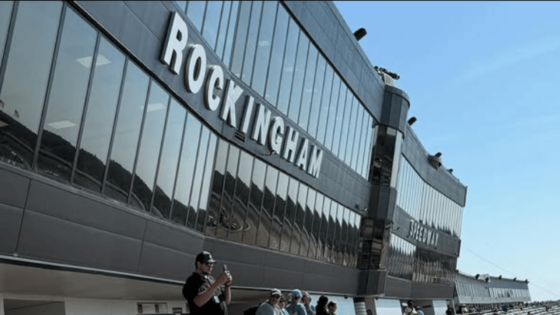Last weekend, Rockingham Speedway came alive in a way it hasn’t in decades. The North Carolina Education Lottery 250 marked the return of NASCAR’s Xfinity Series to “The Rock” for the first time since 2004. What followed was not just a nostalgic throwback, but a loud, rubber-streaked statement of potential. With both the Xfinity and Truck Series races pulling in a crowd that filled grandstands and hospitality suites, there’s a new buzz: Could Rockingham be ready to host a NASCAR Cup Series race again? Could the track that once fell victim to market shifts and modernization now rise as the sport looks to reconnect with its roots?
The scene was electric. Kasey Kahne, winner of the last Cup race at Rockingham in 2004, returned and shared heartfelt reflections: “This place was a staple. To see it come alive again gives me chills.” Jesse Love added youth and drama to the mix, winning the Xfinity race only to be disqualified in post-race inspection—a twist that sparked debates and kept Rockingham trending across social platforms.
But emotions alone don’t write the Cup Series schedule. So what will it really take for Rockingham to claim its place among NASCAR’s elite tracks again?
Rockingham: The Challenge and to be “the angel’s advocate”
Let’s not get ahead of ourselves—revival isn’t reinvention. For Rockingham to return to the Cup Series, it must overcome logistical, economic, and competitive challenges. The most immediate barrier? The already-crowded Cup Series calendar, which has big events and dates aligned with NASCAR’s ambitious drive for a new audience.
With just 36 points-paying races and a growing appetite for international venues, street circuits, and market-expanding experiments, every track is fighting for a finite slice of the pie. There’s a line for a Cup date, and Rockingham’s got to cut ahead of some well-funded projects to get there. “But going back and connecting to our hardcore fans that were with us forever? That’s not wrong. You’ve got to find a way to do both.” That’s what Burton said. Why not? If North Wilkesboro can get a second shot along with the Bowman Gray Stadium, what’s wrong with the return of the Rock?
But last weekend proved something vital: fan interest is no longer a question for legacy tracks. Grandstands were packed. Had a good uptick in CW viewership. The vibe? As real and rowdy as any big-name Cup venue. Chris Williams, promoter and president of the SMART Modified Tour, who helped lead the revitalization effort, said, “The fans were incredible. This is what racing used to feel like. And it’s what it can feel like again.”
And it wasn’t just a show for nostalgia’s sake. The track held up brilliantly. New repave converted the track to a new 0.94-mile oval, which was a different racing configuration. It can be explained as a mix of short-track racing along with the feel of speedways. Veteran fans and first-timers alike found common ground in praising the racing product. NASCAR’s own social media lit up with comments from viewers calling it some of the best racing they’d seen in years.
So, where does the Cup Series argument lie? First, Rockingham offers something the schedule lacks: a classic, abrasive short track that promotes tire strategy and driver skill. In an era where the Next Gen car has struggled to create compelling racing at short tracks, Rockingham stands out as a venue where talent still matters.
Second, it serves the Southeast—the sport’s heartland. While NASCAR pushes west and international, there’s something deeply grounding about recommitting to its roots. Maybe Darlington Raceway doesn’t need two dates on the calendar, especially with Rockingham in the same vicinity. Finally, the infrastructure has come a long way. After years of decay, the current leadership has made serious investments. Garage upgrades, repaving in key areas, modern tech integrations—the bones are old, but they’re strengthened.
Who Else Deserves a Shot at Cup Resurrection after Rockingham?
Rockingham’s success has triggered a wider conversation: if “The Rock” can come back, what other ghost tracks might deserve a second chance?
The most obvious comparison is Chicagoland Speedway. Once a staple of the mid-2000s schedule, its intermediate layout became a casualty of changing racing styles and fan disinterest. But in today’s age of shifting perspectives and Next Gen adaptability, tracks like Chicagoland could offer fresh potential, especially with its urban proximity and facilities still largely intact.
Nashville Fairgrounds Speedway also continues to float on the radar. With a diehard fan base and urban resurgence happening around it, many insiders believe it’s not if but when this historic venue gets its Cup moment. Then there’s Milwaukee Mile—one of America’s oldest race tracks. With the Truck Series recently returning, a Cup comeback isn’t entirely out of reach, especially if Rockingham’s return proves logistically sound and commercially viable.
Ultimately, the question for these venues isn’t just about infrastructure or nostalgia. It’s about storytelling. Can they provide the kind of racing narrative that connects generations? Rockingham just proved that it’s more than a relic—it’s a revival point. And in that revival lies a bigger opportunity: the reshaping of NASCAR’s future with its past in mind.
Rockingham’s comeback wasn’t a fluke. It was a blueprint. A track that many had written off just made the case—in firing engines, packed stands, and authentic competition—that it belongs on the sport’s biggest stage. Challenges remain, from schedule politics to long-term investment, but if NASCAR is serious about creating a diverse, exciting, and heritage-driven future, Rockingham deserves more than just applause.
The post Can Rockingham Finally Claim NASCAR Cup Series Glory After 20 Years? Here’s What We Think appeared first on EssentiallySports.
